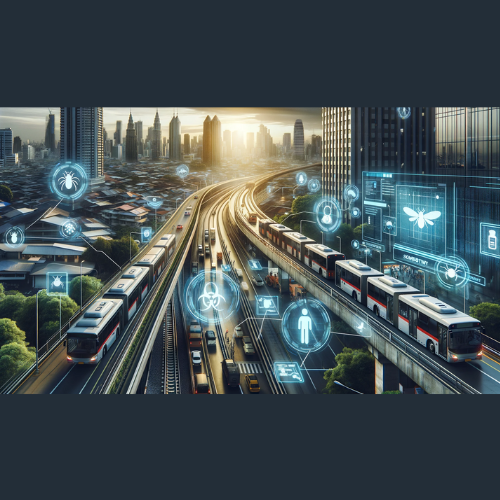
03 Jan Public Transportation & Pest Prevention
Ensuring Health and Safety in Transit
In bustling urban landscapes, public transportation systems stand as vital conduits, ferrying millions daily. Yet, these transit systems often grapple with an unseen, yet significant challenge: pest infestations. This blog delves into the critical necessity of effective pest control within these public networks, underscoring its impact on public health, safety, and the overall passenger experience.
Pest infestations in public transportation are more than mere inconveniences; they pose serious health risks and can cause extensive infrastructural damage. Rodents, insects, and other pests can easily find refuge in the sprawling networks of buses, trains, and stations. Their presence not only compromises hygiene but also impacts the operational integrity of these transit systems.
Among the most prevalent pests in these environments are rodents, cockroaches, and bed bugs. These pests are not just a nuisance but are carriers of various diseases. Their ability to thrive in the confined and crowded spaces of public transportation systems makes their management a top priority for transit authorities.
Integrated Pest Management (IPM) offers a sustainable approach to controlling pests in public transit. This methodology, focusing on understanding pest behavior and lifecycle, advocates for the minimal use of chemicals. Regular inspections, improved sanitation, and physical pest control methods form the cornerstone of IPM in public transportation systems.
Global Innovations and Collaborative Strategies
Cities like New York, London, and Tokyo provide insightful case studies in managing pests in transit systems. These metropolitan areas have implemented comprehensive pest control programs, utilizing both traditional and innovative methods. Their experiences offer valuable lessons in proactive pest management and public engagement strategies.
Technological advancements are revolutionizing the field of pest control in public transportation. Automated monitoring systems, eco-friendly pesticides, and data analytics are playing a pivotal role in early detection and management of pest infestations. These technologies enable transit authorities to respond more quickly and effectively to potential pest problems.
Effective pest management in public transportation is not solely the responsibility of transit authorities. It requires active collaboration between pest control professionals, transit staff, and the public. Educating passengers about prevention measures and encouraging them to report sightings are crucial steps in maintaining a pest-free transit environment.
Challenges and Future Directions
Despite progress, challenges such as pesticide resistance and budget constraints remain. Future trends in pest control are likely to focus on sustainable methods and increased funding for public transportation infrastructures. Continuous research and development in eco-friendly pest control solutions will be integral to these efforts.
Pest control in public transportation systems is an essential aspect of urban management. A combination of scientific approaches, technological innovation, and community collaboration is crucial to ensure the health, safety, and comfort of passengers. As urban populations grow, so does the importance of effective pest management in these critical public spaces.


No Comments